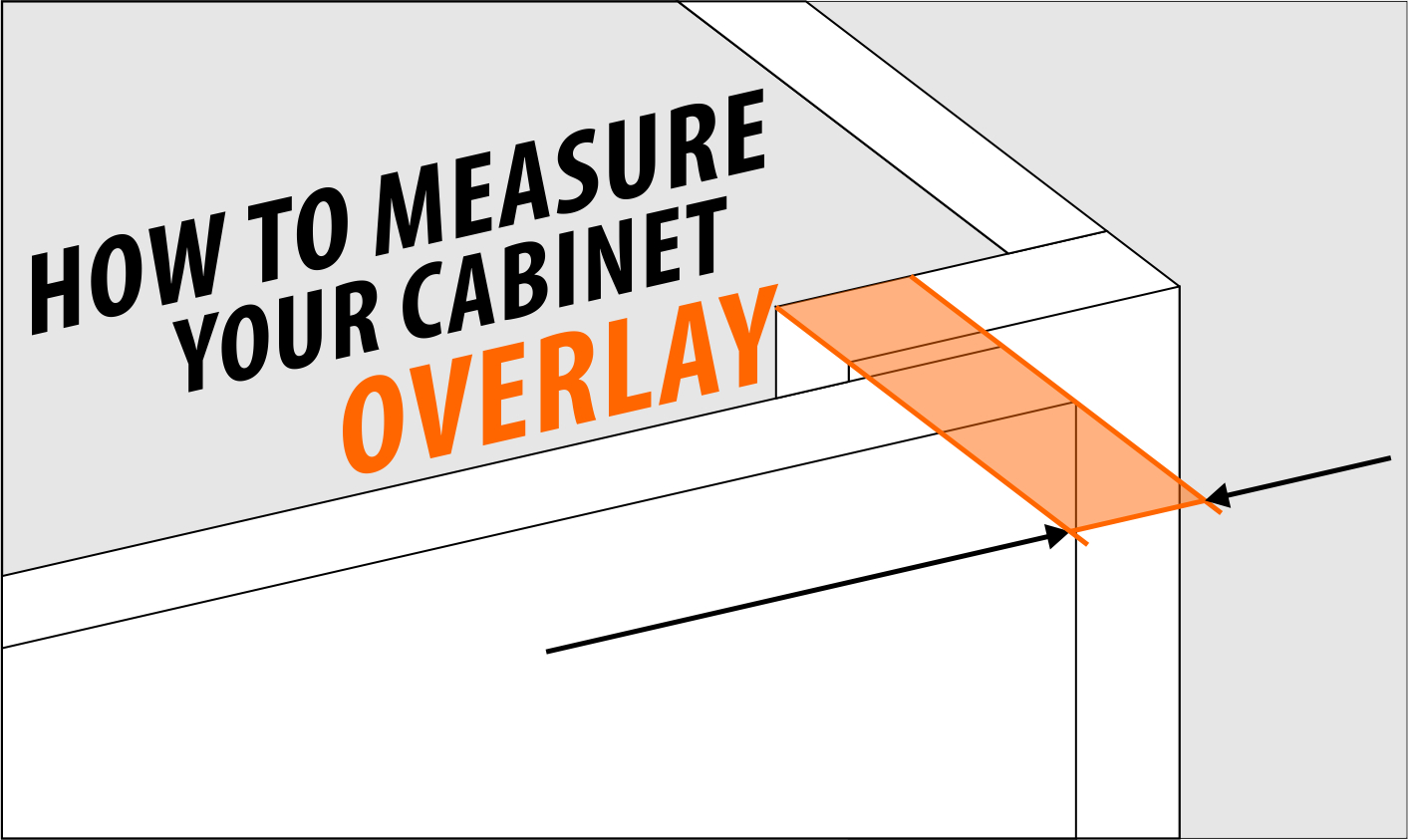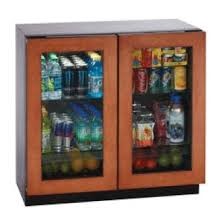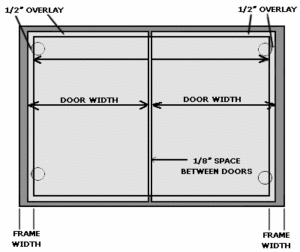
Often times, cabinet doors are designed to lay on top of the cabinet opening. When the cabinet is closed, its door – which is slightly wider than the opening it covers – comes to rest against the exterior face of the cabinet itself and conceals an area of the cabinet frame or panel. This type of design is known as an “overlay” because it literally lays over the front of the cabinets.
Simply put, cabinet overlay is the space that your cabinet door covers the frame or panel of your cabinet, on the hinge side of the door.
Measuring the Overlay
Measuring the door’s overlay is one of the critical steps you’ll need to take when preparing to install a cabinet door or replace existing hinges. If the overlay is not measured properly, then the door won’t lay correctly over the cabinet. When measured incorrectly, the cabinet door will either extend too far (and touch the door that it is next to), or it will not extend far enough and leave a gap of space that makes the inside of the cabinet partially visible.
The measuring process is not difficult as long as you follow some basic procedures to ensure an accurate fit. Here’s what you’ll need:
- A pencil with an eraser, or easy-to-remove masking/painter’s tape that will not leave residue on your cabinets.
- A ruler
Step 1:
- Close the cabinet door.
Step 2:
- (Pencil Method) Mark the exact edge where the cabinet door meets the frame or panel of the cabinet.
- (Tape Method) Line up the tape with the exact edge where the cabinet door meets the frame or panel of the cabinet. Be careful not to run the edge of the tape under the door, as this will result in an incorrect overlay measurement.
Step 3:
- Open the cabinet door.
Step 4:
- (Pencil Method) Measure from the pencil mark to the inside edge of the cabinet opening. This is your cabinet overlay.
- (Tape Method) Measure from the inside edge of the tape to the inside edge of the cabinet opening. This is your cabinet overlay.
Another method that is used (but is not as accurate) is to measure the width of the door and then subtract the width of the cabinet opening, divided by two. For example, if the cabinet door is 20 inches wide and the cabinet opening is 18 inches, then you would have 20” minus 18” divided by 2 = 1” overlay.
What happens if your cabinet is covered by two doors that overlay only where the hinges are mounted, but meet in the center of the cabinet’s opening where they close without any overlay? In other words, what if your cabinet doors look like a miniature version of a pair of French doors?

In that case you can still use the methods explained above because there is still going to be an equal amount of overlay on either side of the opening. Here’s a sketch that illustrates how that works.

Note: If your cabinet door is flush with the frame or panel (instead of sitting on top of the cabinet), then you do not have an overlay cabinet. This cabinet type is referred to as “inset”, since the door is actually set inside of the cabinet opening.





